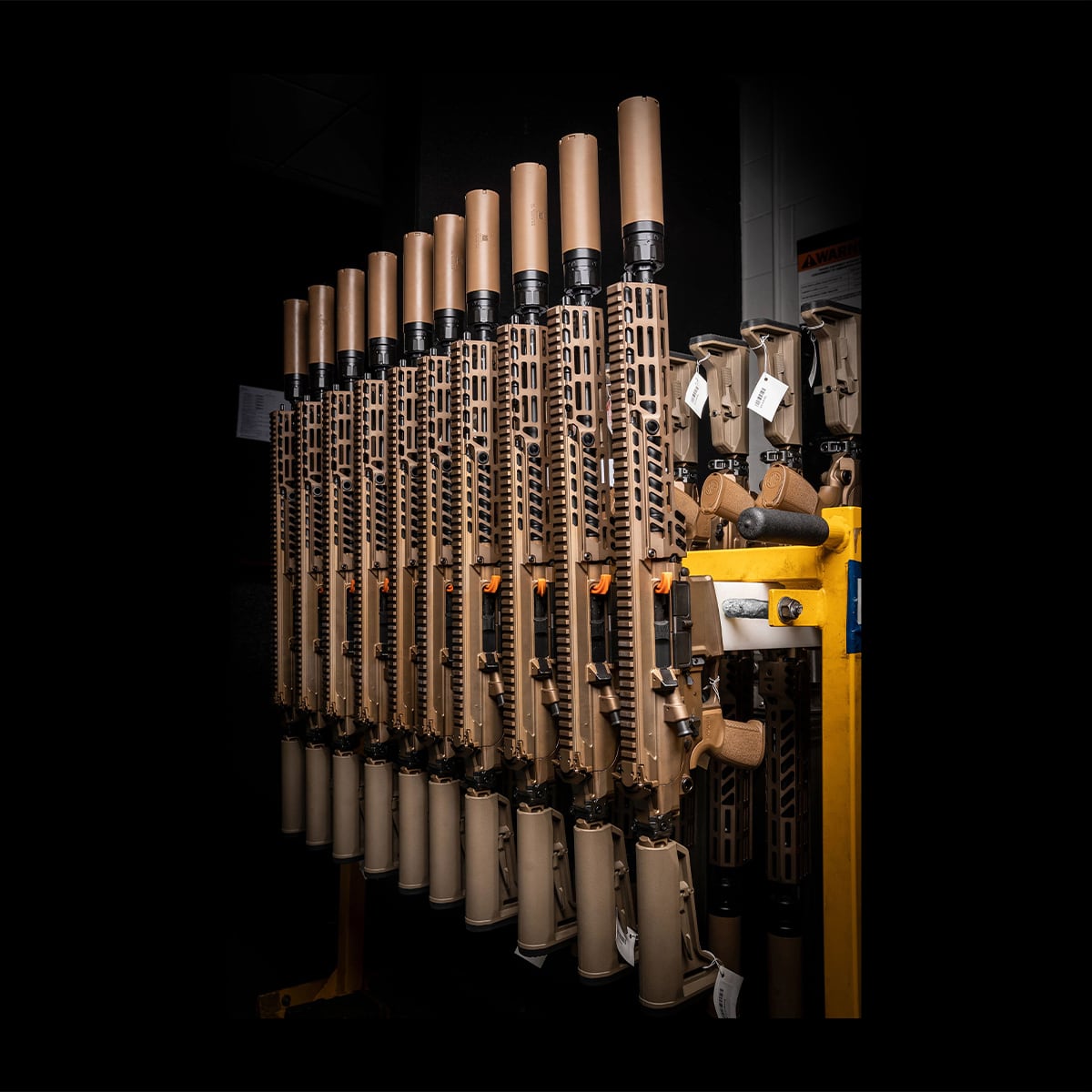On all key technical measures, the Next Generation Squad Weapons program is imploding before Army’s very eyes. The program is on mechanical life support, with its progenitors at the Joint Chiefs obstinately now ramming the program through despite spectacularly failing multiple civilian-sector peer reviews almost immediately upon commercial release.
Indeed the rifle seems cursed from birth. Even the naming has failed. Army recently allowed a third-party company to scare it off the military designation M5. The re-naming will certainly also help scupper bad public relations growing around ‘XM-5′ search results.
Civilian testing problems have, or should have, sunk the program already. The XM-5/7 as it turns out fails a single round into a mud test. Given the platform is a piston-driven rifle it now lacks gas, as the M-16 was originally designed, to blow away debris from the eject port. Possibly aiming to avoid long-term health and safety issues associated with rifle gas, Army has selected an operating system less hardy in battlefield environments. A choice understandable in certain respects, however, in the larger scheme the decision presents potentially war-losing cost/benefit analysis.
Civilian testing, testing Army either never did or is hiding, also only recently demonstrated that the rifle seemingly fails, at point-blank ranges, to meet its base criteria of penetrating Level 4 body armor (unassisted). True, the Army never explicitly set this goal, but it has nonetheless insinuated at every level, from media to Congress, that the rifle will penetrate said armor unassisted. Indeed, that was the entire point of the program. Of course, the rounds can penetrate body armor with Armor Piercing rounds, but so can 7.62x51mm NATO, even 5.56x45mm NATO.
The fundamental problem with the program is there remains not enough tungsten available from China, as Army knows, to make the goal of making every round armor piercing even remotely feasible. The plan also assumes that the world’s by far largest supplier will have zero problems selling tungsten to America only for it to be shot back at its troops during World War III. Even making steel core penetrators would be exceedingly difficult when the time came, adding layers of complexity and time to the most time-contingent of human endeavors. In any case, most large bullet manufacturers and even Army pre-program have moved to tungsten penetrators for a reason, despite the fact it increases the cost by an order of magnitude and supply seems troubled. Perhaps Army has a solution, perhaps.
The slight increase in ballistic coefficiency between the 6.8x51mm and 7.62x51mm cartridges neither justified the money pumped into the program nor does the slight increase in kinetic energy dumped on target. Itself a simple function of case pressurization within the bastardized 7.62mm case. Thus the net mechanical results of the program design-wise is a rifle still chambered in a 7.62x51 mm NATO base case (as the M-14), enjoying now two ways to charge the weapon and a folding stock. This is the limit of the touted generational design ‘leap’ under the program. And while the increased case pressure technology is very welcome the problem is, in terms of ballistics, the round is in no way a leap ahead compared to existing off-the-shelf options as those Army nearly went with under the now disavowed Interim Combat Service Rifle program, or it in fact did purchase schizophrenically just before the NGSW program began with the HK M110A1.
There is simply no rhyme or reason to Army rifle procurement programs. Problematic programmatic choices do not stop here, however. Another problem is the weapon sight. The Vortex XM-157, which may have critical components made in China, is most definitely not an ‘auto-aiming’ sight. For guaranteed hits, the shooter still must manually ‘ping’ the target. This takes back usable seconds and makes shooting 100% accurately on the fly, as envisioned under the program to justify the reduced available round count, an utter pipe dream. The scope is otherwise a normal scope.
Starting from a highly dubious intellectual, strategic and tactical baseline, the NGSW program is now failing mechanically and ballistically at once. Army came out hard with the program’s aims and expectations, unreasonably so, practically declaring a War on Physics from the outset. Unfortunately, like so many other antecedent programs Army has lost the war again, badly. In terms of weight, recoil, durability and ballistics, expectations vs reality are crashing down on Army right now, hard.
Dr. Allan Orr is a strategic studies specialist who focuses on asymmetric warfare. His current analytical interests include hostage rescue, where he developed an interest in small arms following the Lindt Cafe Siege in Sydney, Australia. He currently directs OrrCon, a boutique one-client-per-industry defense sector consulting firm.




